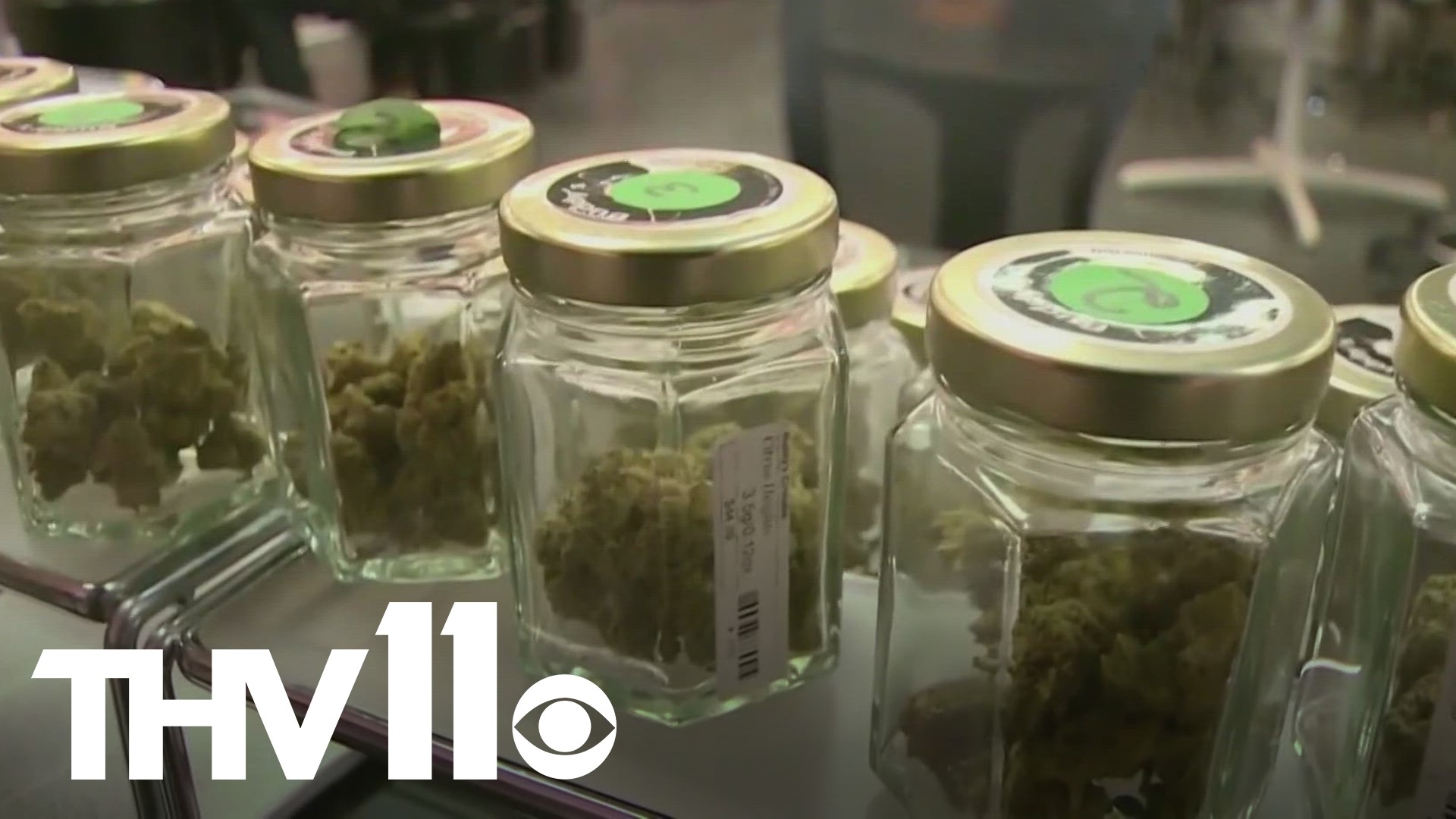HOT SPRINGS, Ark. — The first legal sale of medical marijuana in Arkansas occurred at a windowless, former roadside barbecue shack. Dozens lined up outside the nondescript building in May 2019 after two-and-a-half years of legal wrangling in a sign of pent-up demand.
Today, the same owners have cashed in on that demand by building a 1,100-square-foot dispensary right next door in Hot Springs called Suite 443. The original building is now a tobacco smoke shop with tanning beds arriving soon.
"It's great. We really didn't know what to anticipate when we first started, but it's met all of our expectations," Green Springs Medical owner Dragan Viscentic.
Green Springs Medical is a dispensary that began selling medical marijuana the morning after what was then called "Doctor's Orders" filled the historic first prescription.
"Originally, the state anticipated a one percent participation rate," Vicentic said. "There are three million people in the state, so 30,000 people is what they anticipated would get medical marijuana cards. We're three times that, so it's been really good for Arkansas and really good for taxes."
According to Scott Hardin, the spokesperson for the state Department of Finance and Administration, which oversees the Medical Marijuana Commission, there are just under 94,000 Arkansans with medical marijuana cards.
Hardin has become a familiar face to the media and the public with frequent updates on the exact numbers of pounds sold and dollars spent. After four years, he reported that Arkansas had collected just over $100 million in taxes.
That comes from a 6.5% sales tax and a 4% "privilege tax." The latter has been dedicated to UAMS and assisting the state's public university hospital to enhance its cancer research and treatment.
The fruits of that revenue stream can be found in the recent ribbon-cutting for a high-tech imaging center planned in partnership with Baptist Health.
Lawmakers earlier this year extended and redirected one portion of the tax toward increasing medical residencies and another to be spent on reducing the debt amassed in the free/reduced school lunch programs.
Those new intended funding targets are signs lawmakers believe the market will continue to expand for at least another two years.
"It's just a matter of time until we cross 100,000 [medical marijuana cards]," Hardin said.
Other figures that show the industry has, in Hardin's words, "hit a groove" are the approximately 3,000 jobs created from scratch. The state's 38 dispensaries employ 1,740 people, and the eight state-sanctioned cultivators employ 1,100 people.
"It looks like we're going to see anywhere from 22 to 25 million spent every month," Hardin said. "That doesn't look like it's changing anytime soon."
But a big question emerged on the horizon last November. That's when Arkansas voted down recreational marijuana, but neighboring Missouri joined the nationwide expansion.
Issue 4 faced headwinds in Arkansas from the same groups opposed to legalizing marijuana in any form and sank when longtime marijuana supporters opposed the structure of that particular proposal.
Most people we spoke with expect the issue to appear on the ballot again at some point, though they differ on how long until it happens.
While we wait, public health experts are trying to fill a data vacuum on how medicinal marijuana truly is.
"We're in the middle of our three-year grant from the National Institutes of Health to study the effects of introducing medical marijuana into the state of Arkansas," said Dr. Joe Thompson, the CEO of the Arkansas Center for Health Improvement.
It's still too early to draw medical conclusions, but Thompson, a former Arkansas surgeon general, does have data that could influence future proposals.
"We have found so far that about 10 percent of licensed physicians in the state have qualified an individual," Thompson said of doctors' apparent growing familiarity with cannabis. "Given the dialogue and even the resistance to the introduction of medical marijuana, 10 percent is a pretty large number."
ACHI is being deliberate with its research, despite the high demand for conclusions nationwide. Limited information quickly becomes political talking points, with elections popping up every cycle.
For instance, headlines warned of a surge in youth marijuana use after Colorado started selling legally in 2014. Still, within the last three years, opposite findings made headlines as other states went to the polls.
Despite the political winds, Thompson is among many urging caution and vigilance regarding marijuana and people under 25.
"I think it's important for parents, for leaders, for coaches to be watching for signs of illicit drug use and marijuana use in particular," Thompson said. "This is something we don't want to lose control of. We want to use it if it has a benefit. We want to guard against potential harms."
Controlling what comes next is a recurring theme. Managing the health unknowns, overseeing the financial unknowns, and people like dispensary owner Vicentic, directing the narrative.
"I think where the mistake was last time is they didn't educate the people enough about the benefits of medical marijuana," Vicentic said. "If they had and knew how beneficial it is to you, there would have been a lot more votes for and a lot more approval."

